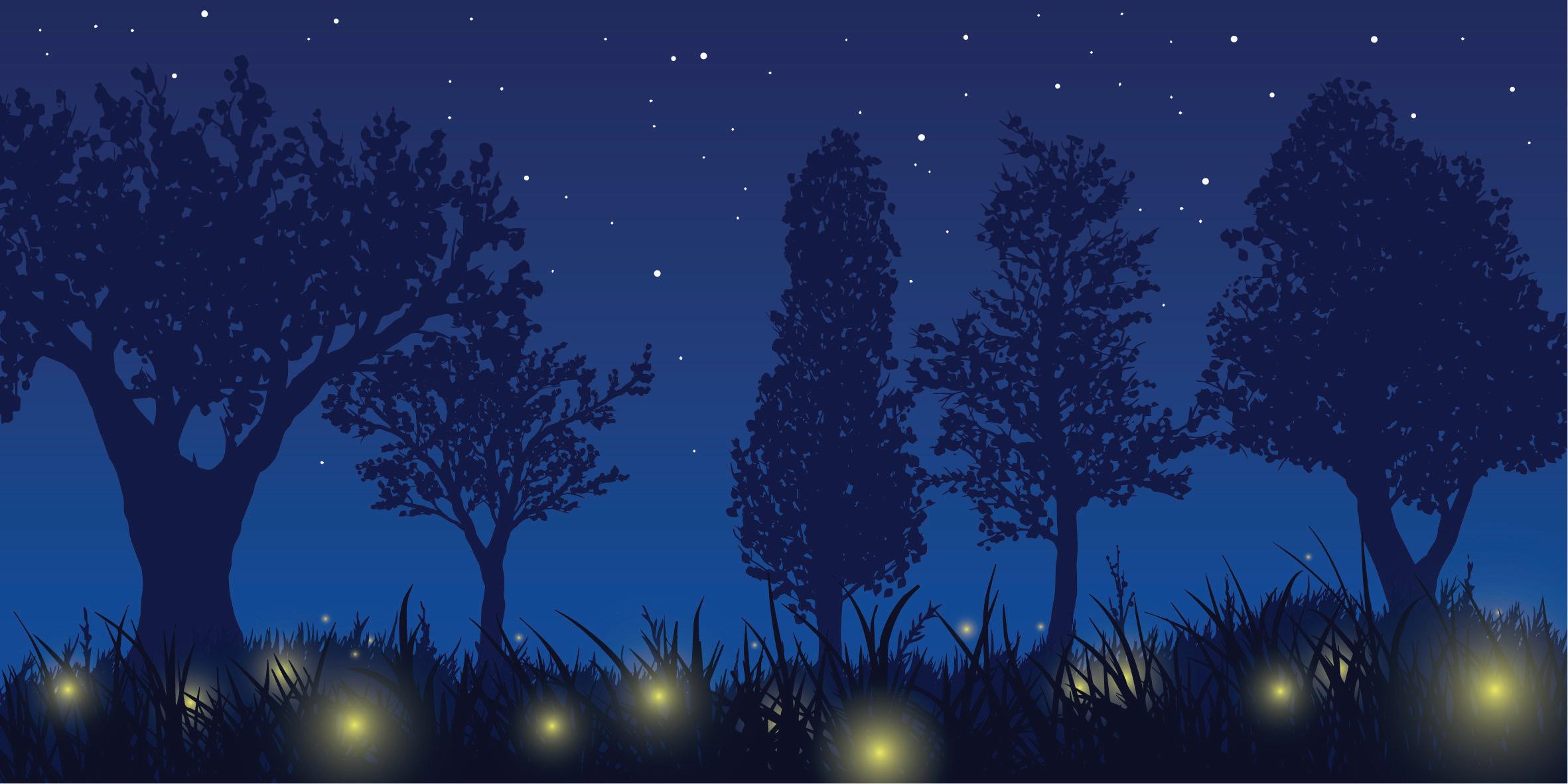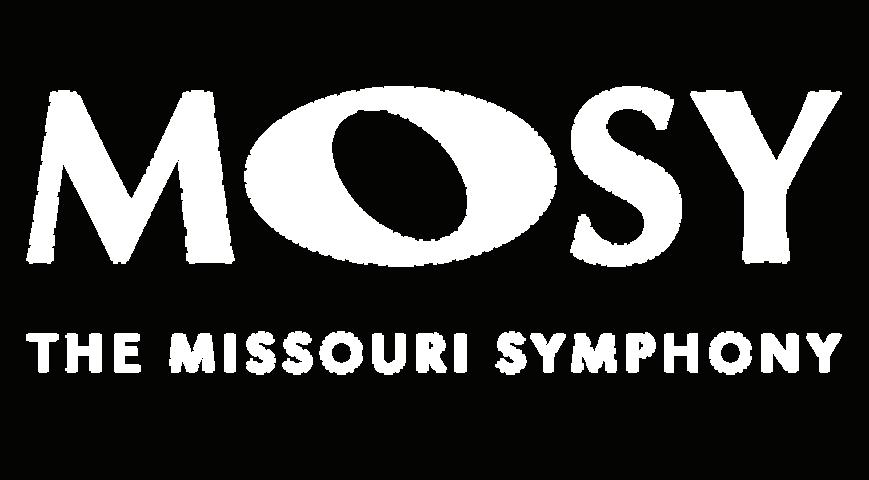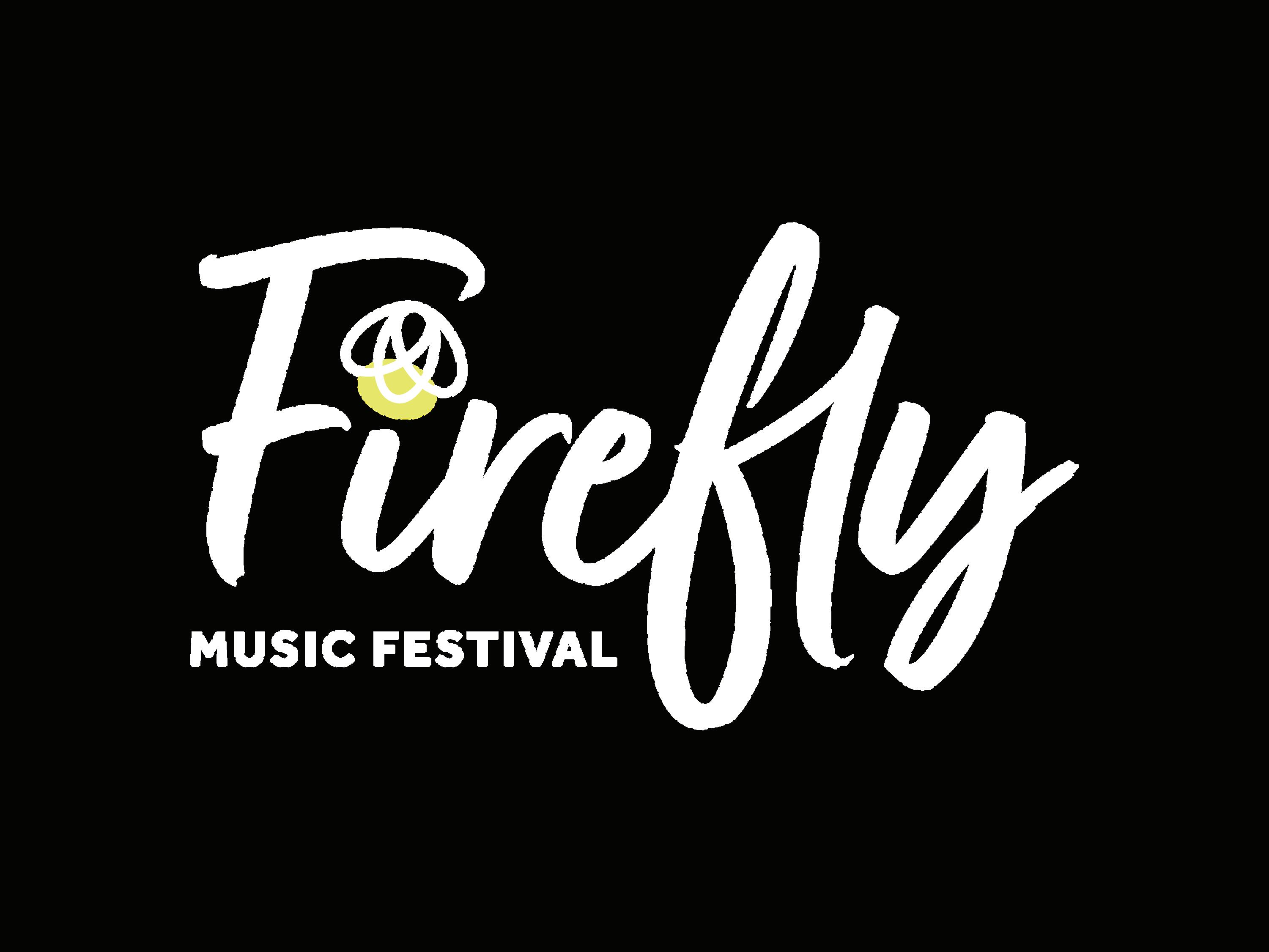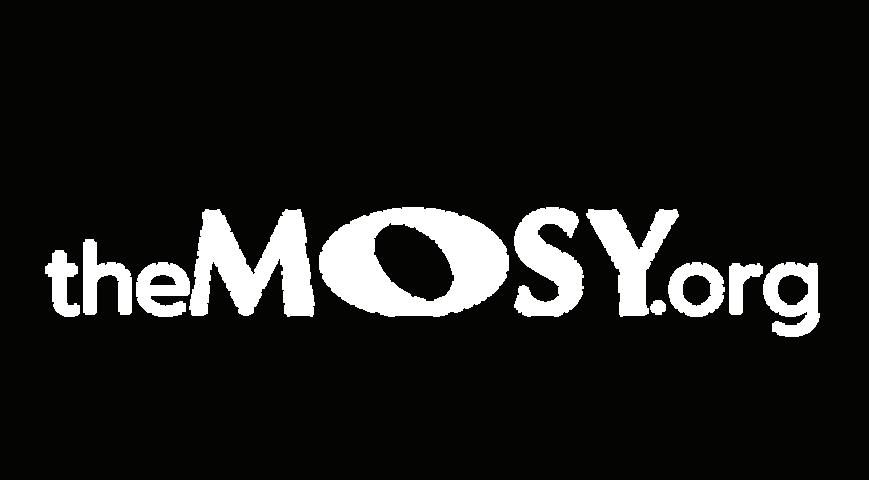THEY PUMP UP THE JAMS PAGE 9

MEET ME AT THE PUBLIC LIBRARY PAGE 18
LEGEN-DAIRY SHOPS IN COMO PAGE 23
BECOME A PROUD PLANT PARENT PAGE 27
These women lift to improve their mental and physical health — and break gym stereotypes. P. 12












THEY PUMP UP THE JAMS PAGE 9

MEET ME AT THE PUBLIC LIBRARY PAGE 18
LEGEN-DAIRY SHOPS IN COMO PAGE 23
BECOME A PROUD PLANT PARENT PAGE 27
These women lift to improve their mental and physical health — and break gym stereotypes. P. 12











No one ever means to stay longer than planned. But it’s pretty common to look at the time and realize you meant to leave 10 minutes ago. It’s a phenomenon so habitual that we even have a regional name for it: the Midwest Goodbye. A declaration of your intent to leave turns into an extra 30 minutes of small chatter and more promises to get going. Hopefully, your host is gracious (and, of course they are, because it’s the Midwest).
Funny as it is, I can’t help but love that there’s a word for living in a moment too good to leave. It’s how I ended up being born in my hometown; my dad came from Buffalo, New York, to small-town Illinois for a short-term job and ended up staying for the long term when he met my mom — so cute, right? Unexpectedly, I’m taking after him. While I’m sad that this is my last editor’s letter for Vox, I’m glad that
it’s not my last time writing for Columbia. This summer, I’ll start my new role as the managing editor for KBIA, my first full-time gig.
I never intended to make my home in mid-Missouri. But when you spend five years loving a place, it’s hard to say goodbye.
A lot of us can probably relate. It explains why Columbia is home to an accent coach who helps Oscar-winning actors from coast to coast perfect dialects for their roles (p. 29). And why a local collective of DJs is using CoMo house parties as soundscapes (p. 9). Together, we make a city that’s hard to get away from. The support a local fantasy author has found in the city’s community of independent writers and booksellers is evidence enough (p. 11).
So, I’m sticking around, too. I have a word limit, so I can’t pull a Midwestern goodbye on you. But know that I would if I could. You’ve made this moment really hard to leave.
EDITOR-IN-CHIEF KATELYNN MCILWAIN
MANAGING EDITOR ABBEY TAUCHEN
DEPUTY EDITOR KRISTINA ABOVYAN
DIGITAL MANAGING EDITOR MARISA WHITAKER
AUDIENCE ENGAGEMENT EDITOR GRACE KENYON
CREATIVE DIRECTOR HEERAL PATEL
ART DIRECTOR CAMPBELL BIEMILLER
PHOTO DIRECTOR SYDNEY LUKASEZCK
MULTIMEDIA EDITOR HALLE JACKSON ASSOCIATE EDITORS

CULTURE JESSE BERLIN, LAUREN BLUE, LAUREN HUBBARD, EMMA LINGO, AMILEE NUZZO, KEARA SHANNON, MAX SHAPIRO
EAT + DRINK CHLOE KONRAD, NIA MARTIN, MELANIE OLIVA, PETRA RIVERA, ANNASOFIA SCHEVE, TAYLOR WILMORE
CITY LIFE ADAM ALLSBURY, CORINNE BAUM, ASHLEY BUTLER, SOPHIA DONIS, ABBY STETINA, TRINIDY THOMPSON, KAITLYN ZOGLMANN JENKINS
STAFF WRITERS MARA DUMITRU, TATEN JANES, SOPHIA KOCH, CHARLIE RECCHIA, KHALIA SMITH, JANE STEINBRECHER, SAM WILLS, CAYLI YANAGIDA SOCIAL & AUDIENCE OLIVIA HOLLER, AINSLEY LOWTHER, IRELAND SHELTON, MEREDITH WENDLING, SHANNON WORLEY
KATELYNN MCILWAIN Editor-in-Chief
Have you heard the news? We have a podcast called Vox Voice, which features local people making waves in 30-minute episodes. Get to know these locals on the latest season:

• Kerri Linder, author of Iconic Restaurants of Columbia Missouri and founder of Columbia Culinary Tours, talks about all things food in Columbia.

• Tootie Burns, a mixed media artist, tells us about the rapidly growing art scene in the North Village Arts District.
• Christi Kelly, president of The Center Project, shares her story on serving LGBTQ+ people in midMissouri.
Find the Vox Voice podcast on Spotify, Apple Podcasts, TuneIn and Blubrry. For more information, visit voxmagazine.com.


CONTRIBUTING WRITERS EZRA BITTERMAN, MEGHAN LEE, EILEEN LI, STEPHANIE MEININGER, GRACE ANN NATANAWAN, MCKENNA NEEF, COLIN RHOADS, NATALIE-ELIZABETH TAN, NICOLE VOSS, AUSTIN WOODS DESIGNERS SIREEN ABAYAZID, LIN CHOI, ASPEN GENGENBACHER, AVA HORTON, JACEY JOHNSON, MEGAN SYDOW EDITORIAL DIRECTOR HEATHER ISHERWOOD
EXECUTIVE EDITOR LAURA HECK SENIOR EDITORS CARY LITTLEJOHN, JENNIFER ROWE OFFICE MANAGER KIM TOWNLAIN
FEATURES
12
Women who lift
Women use weightlifting to raise their own bar in male-dominated spaces.

18
More than books

The Columbia Public Library’s shelves are stocked with community services.
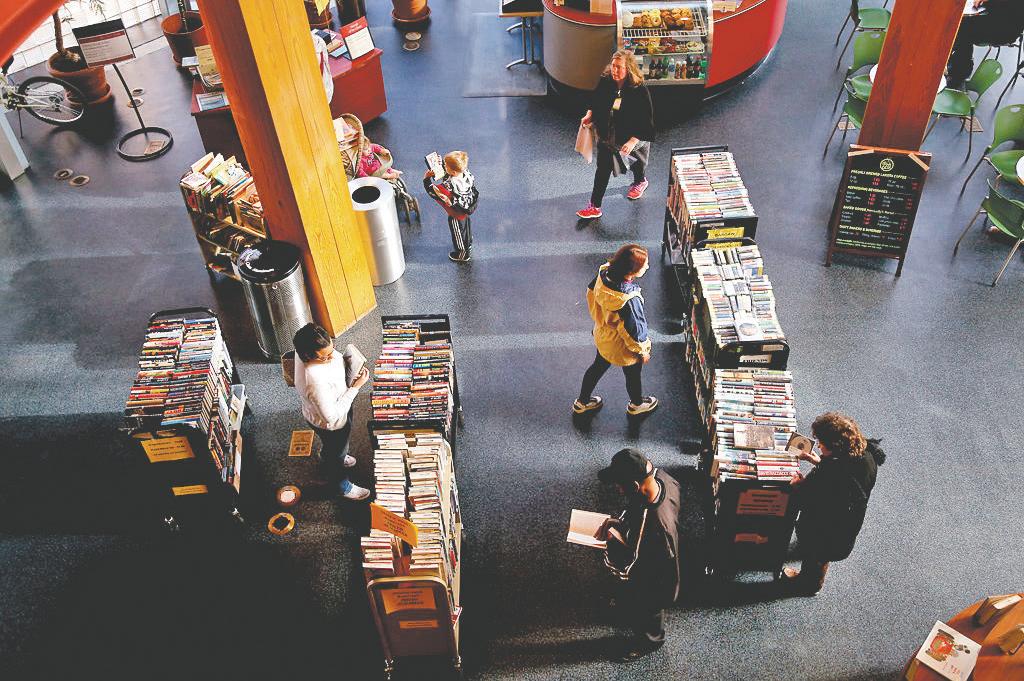
EAT + DRINK
23
A dairy important history
Here’s the scoop on how your favorite local ice cream shops started.

25
Grab your apron
Chef Ashley Nichols helps families bond through her cooking classes.

CITY LIFE
27
Unbeleafable plants

It’s grow time. Start your indoor oasis with tips from houseplant aficionados.
29
Paula Vanlandingham coaches actors from around the world on dialects.
For those in Columbia’s DIY music community, punk rock can be a therapeutic outlet.
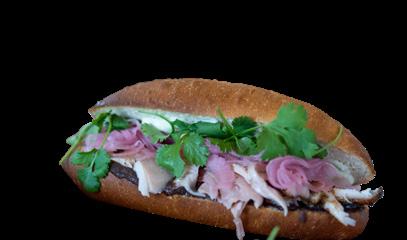 BY AUSTIN WOODS
BY AUSTIN WOODS

Kelly Betz was 15 years old when an exchange student from Argentina started attending their “small, redneck high school” in the Ozarks. Betz had never met someone like the new kid, Tomas, in their tiny community of Leasburg.
Embroidered patches adorned his backpack, and he listened to strange bands that Betz didn’t recognize — such as NOFX and Pennywise — known for highspeed sonic assaults, amateur musicianship and petulant, spit-in-your-face attitude.
Betz became acquainted with this mysterious power after Tomas convinced them to play bass in his band Prank. Soon Betz was performing and booking shows at local community centers.
Betz learned that this supernatural force had a name: punk rock. Betz now credits the creative mechanism as a way to process difficult emotions, trauma and mental illness.

In 2005, 18-year-old Betz moved to Columbia and started a punk house called South Anarchy on South Ann Street and the do-it-yourself venue No Coast with a group of friends (they later used this name for a rap battle league they established in 2009). These venues, with equipment and talent provided by the artists themselves, have since closed, but Betz still records and performs music at underground shows throughout the city as a solo artist or with current band Clutter Cult.
Betz’s DIY mentality pervades every aspect of their life, including their day job. In addition to making music — and

Scream therapy is a way to release anxiety and stress through the act of yelling. Punk rock emulates this idea by allowing its creators to tap into negative emotions and let go of them.
recently releasing their 300th song — Betz has spent the past seven years working at a Columbia-based rehabilitation center for teenagers, proselytizing punk rock for younger generations and embracing the genre’s therapeutic possibilities to help others process their emotions.
Betz says punk rock is especially suitable for a therapeutic environment because it’s more cathartic than other styles of music. This quality runs deeper than the genre’s breakneck tempos and apoplectic bursts of noise. Betz says punk rock provides a sense of community for outsiders and a framework to enact change within themselves and in their communities.
After getting sober in 2014, Betz grew enamored with the recovery process and the possibilities of therapy. They took an entry-level technician job at the rehab center in 2016 and they were eventually promoted to an integrated health specialist in 2020, a position they compare to a caseworker or drug counselor.
As an integrated health specialist, Betz leads one-on-one and group sessions that focus on creativity as a way to help teenagers meet their therapeutic goals, such as working out personal traumas or cementing a sense of identity. They have focused these sessions on everything

from poetry, painting, and of course, music. With Betz’s help, young people have written, recorded and performed their own songs as a way to manage addiction, mental illness and trauma.
Betz’s approach to this process is largely informed by their punk ethos.
“I’m all about action and having strong ethics,” Betz says. “Part of that means telling a teenager who is going through a hard time — who has mental health issues, who has issues with substances — that they are a musician already, no matter what their talent level is. They are a performer, and they are an artist, and they’re worthy of having a voice in their community.”
Betz isn’t the only member of Columbia’s punk scene to appreciate the genre’s mental health benefits. Colin Shepherd, guitarist for local punk band New Car Scent and founder of the DJ collective Halftone, which connects CoMo’s underground DJs (see our story on Halftone on p. 9), moved to Columbia from St. Louis in 2018 to study engineering at MU. But while his classmates were meeting people at networking events and fraternity parties, Shepherd found his social circle in the sweaty mosh pits of the city’s punk shows.
Shepherd says he was experiencing depression before he started attending local DIY shows. As he became more involved in the scene and began playing in bands, and through Halftone, he says his mental health started to improve considerably. Although Shepherd graduated in 2022 and now lives between both cities, he still performs in Columbia and creates visual art for other local bands to contribute to the scene.
Besides helping him find like-minded people, Columbia’s punk scene gave Shepherd an outlet for unrestrained, caterwauling self-expression. Writing songs, he says, is an introspective exercise, a way to gain more clarity in his emotions.
The punk rock genre can help people understand and work through difficult emotions. It provides an outlet to explore unfettered artistic expression.
“Oftentimes, lyrics for (New Car Scent) songs are very personal,” Shepherd says. “Screaming (the lyrics) helps, I think. I don’t think there’s a better type of show to get energy out than (punk shows), because people go crazy for one reason or another, whether they want to or need to.”
Hayden Jensen, guitarist for the bands PROTON and Littered With Arrows, says the simplicity of punk — with its barking vocals, primitive power chords and sloppy drumming — gives it an egalitarian edge. Since it doesn’t require much musical training, it’s more accessible than other genres, and can resonate with more people, he says.
The punk scene in Columbia can be elusive to newcomers, with secretive venues and house-party shows. Kelly Betz says most events are advertised by word-of-mouth, but they recommend checking out flyers in downtown Columbia or on social media. Rock out at Rose Music Hall, Cafe Berlin or local DIY venues, which typically host punk rock shows. Betz’s solo music is available on all platforms under their artist name, Kelly Betz.
But for Jensen, performing is even more emotionally fulfilling than writing, largely because of the response his crunchy, noised-up guitar playing elicits from crowds.“To see people go wall-towall, moshing to your songs, it makes you feel good,” Jensen says.
Punk is more than a style of music. It’s a full-fledged, self-sustaining ecosystem supported by bands, independent record labels, visual artists and venue owners. By fostering a community on this scale, punk rock offers solace above all — loud, slovenly and head-banging solace, accessible to anyone willing to walk on the cultural margins.
For Betz and other Columbians, it provides those who feel alienated or who struggle with their mental health a way to weaponize their suffering or maybe even transcend it entirely. All it takes is a few loud chords.

Each month, Vox curates a list of can’t-miss shops, eats, reads and experiences. We find the new, trending or underrated to help you enjoy the best our city has to offer.
BY AMILEE NUZZO, MELANIE OLIVA, PETRA RIVERA, MAX SHAPIRO AND ANNASOFIA SCHEVE
With Liv Burney as she embarks on her solo career after nearly seven years of playing with her younger sisters, Emma and Bella, as the folk rock group The Burney Sisters. “I have recently felt a shift in priority and needed to give myself some time to rest and from being on the road so much last year,” Liv Burney wrote in a Facebook post in March. The younger Burneys will continue as a duo, with Liv still planning to perform with them occasionally. Catch Liv Burney’s set at Compass Fest. 3 p.m., June 3, 1013 Park Ave., $15, rosemusichall.com, @iitslivvi on Instagram
At one of these new or newly updated eateries around Fay Street. Grab a bite of Mexican-style barbecue at Irene’s BBQ, which started as a popup and opened its restaurant in April. Irene’s incorporates flavors from Texas, Mexico and the Caribbean, boasting a variety of pulled pork sandwiches, tacos and a signature meat platter. April also saw the opening of Six-Mile Ordinary’s new tap room, which serves cocktails and liquor flights of vodka, gin, bourbon, tequila, whiskey and rum. You can also look forward to a renovated Logboat Brewing Company, which will have a new upstairs bar, outdoor restrooms, an awning over the beer garden, an elevated patio and a container bar. Irene’s BBQ, 711 N. College Ave., irenesbbq.com; Six-Mile Ordinary, 700 Fay St., six mileordinary. com; Logboat Brewing Company, 504 Fay St., logboat brewing.com
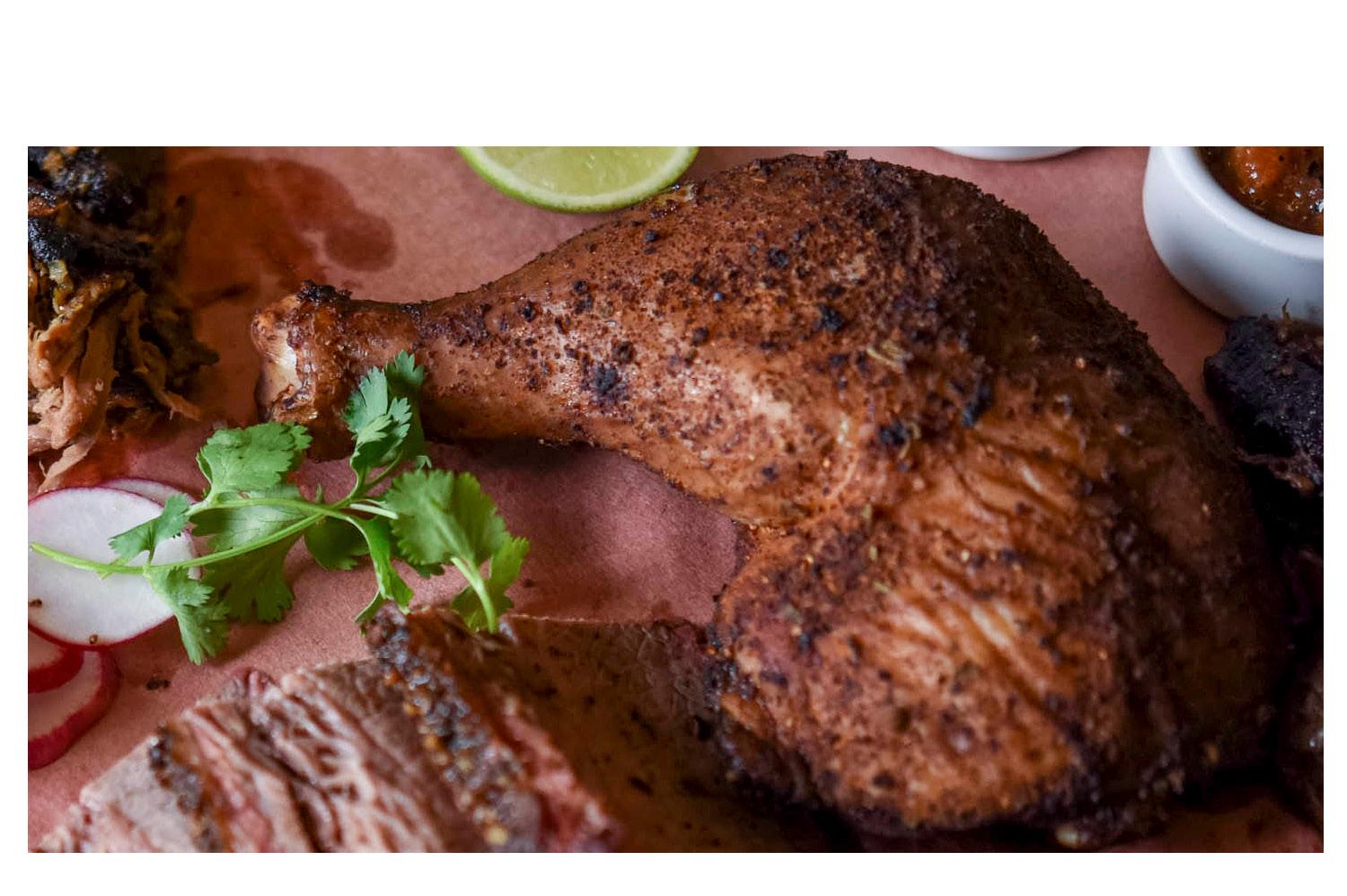
With Autumn Equinox during Drag Queen Story Hour at The Dandy Lion Café, an LGBTQ-friendly coffee shop in Ashland. Patrons of all ages are encouraged to attend and bring their own books to read. Seating is limited, so you’ll need to sign up online. 10 a.m. to 12 p.m., June 11, 102 S. Main St., Ashland, free, nclusionplus.com, 557-9222
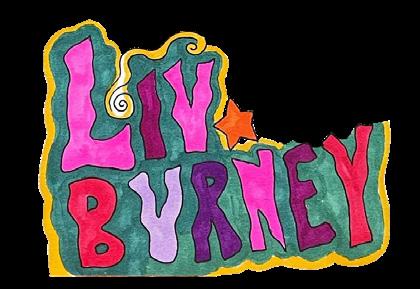
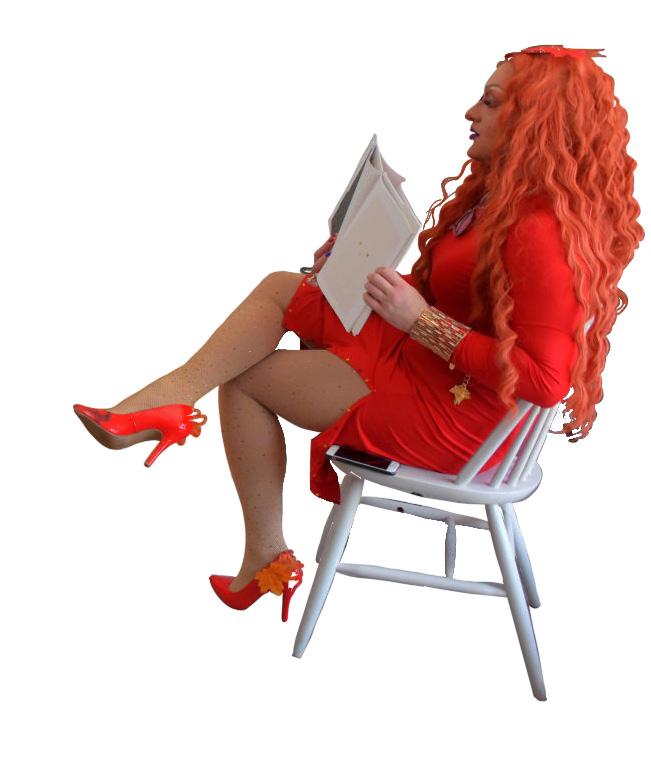
Juneteenth with Columbia’s third annual parade and celebration. Juneteenth commemorates the day the last slaves were freed in Galveston, Texas — June 19, 1865 — about two and a half years after President Abraham Lincoln signed the Emancipation Proclamation. The event will kick off with a parade along Broadway and into Dou10 a.m., June 17,
COMOJuneteenth@gmail.com, COMO Juneteenth on Facebook

Back in time with a documentary on Missouri’s very own Woodstock, the 1974 Ozark Music Festival. Filmmaker Jefferson Lujin is hosting two screenings of the documentary at the State Historical Society of Missouri. Between screenings, traditional Ozarks music from Pat Key and Ben Miller featuring Emma Burney will take you on a trip down memory lane. Lawn chairs are encouraged for the outdoor concert in the parking lot, where you can also chow down on eats from local food trucks. Film screenings at 2 and 7 p.m., live music 4:30-6 p.m., June 9, 605 Elm St., shsmo.org

Tai Fletcher is the first Columbia Parks and Recreation eSports administrator. He came into the role in summer 2022, when the department launched its eSports program. He helped develop the eSports program at Northwestern State University of Louisiana, where he graduated in 2021 with a hospitality and tourism management degree.

After working in competitive and casual gaming during his last few years of college, Fletcher followed his partner to Columbia and looked for a non-traditional career path to find prospects amid eSports. As Fletcher began to look for the eSports scene here in Columbia, he realized there weren’t many resources available outside of the college sector. Now, Fletcher is focused on creating a community for people of all ages to connect over gaming. ESports programs within Parks and Recreation departments are still relatively uncommon, but Fletcher has found success running tournaments that anyone from the community can join.
Learn more in this excerpt from an episode of the Vox Voice podcast, which you can find at voxmagazine.com.
I would define eSports as a connected ecosystem of casual and competitive gaming that effectively is meant to help everybody appreciate the medium. I often just connect it to interactive entertainment, because everybody can understand entertainment being the traditional things: sports, news, other media, concerts, etc.
The Columbia eSports league is open to anyone. There are weekly tournaments for those 14 and older on Wednesday nights at the Columbia Sports Fieldhouse and a Discord server. Find information on the eSports page of the city of Columbia website.
Why is eSports important to you?
ESports to me is taking video games, something I’ve always loved and cherished since childhood, and connecting that with others to really present an interesting, new way to interact and connect with people, and new things to do, new fun games to play and new fun ways to meet people. I’ve made tons of friends, not only just being interested in gaming in general and joining different communities, but also now helping to sponsor them and support them by creating different communities where people can meet friends and make new experiences.
What’s something you think people misunderstand about eSports? So often, when people think of eSports, they think of something that unless you’re really high ranking at it, then it’s not really for them. And I’ve always encouraged — especially since I’ve had my position — to say, “Well, hey, eSports is a lot more open than that. You can have plenty of experiences with eSports and doesn’t have to be because you’re a competitive player or because you’re getting scholarships,” or something. All of those things are new.
What sparked your love for gaming?
The love for gaming itself really just came from growing up and opportunities to do different things. I already had a bunch of friends who already had game systems, like PlayStations or even other things like an Xbox at the time. And I said, “OK, that’s so cool, I would really like to have something like that.” And my family — it was instilled in me the earning prospect of it, or having to work hard for it. So gaming to me has always been something that I’ve been able to do, in a sense (as) a reward or (by) working hard.
What do you see for the future of eSports in Columbia?
I’m working with eSports on multiple different levels: collegiate level, high school level, and I’m just looking for the community basis, the casual level that’s available for people to come to have a fun gaming event or fun gaming night, and then want to come back want to bring friends, bring your family, and just have fun, where they don’t have to be college students to be involved in a program. They can really just meet other people who are interested in the same thing in the same area.
Local DJ collective Halftone is creating an artistic community and spreading its sound.
BY SAM WILLS

Most Columbians know DJs from big downtown bars. But underneath mainstream music is the underground DJ culture — made of people who play more alternative music at house parties and small shows.
In 2022, Colin Shepherd founded a collective called Halftone to bring some of these local underground DJs together. A collective is different from a band
because it allows individual artists to be in a group of compatible musicians with similar style. They can do shows together or individually with more flexibility.
A big motivator for musicians to be in a collective is to be around like-minded people while creating art, especially when the art form is not mainstream.
Halftone does a little bit of everything. The group performs, records and
Billie Huang (left) and Colin Shepherd are both part of Shepherd’s DJ collective, Halftone. Halftone’s sound varies from techno to industrial, which can differentiate Columbia’s underground DJ scene from mainstream DJs.

releases its sets on YouTube, sells music on its website and creates art in the form of clothing. When it comes to sets, Halftone is inspired by Boiler Room, a music broadcaster and club promoter, which shares recorded performances of underground DJ sets from around the world on its website, boilerroom.tv.

The collective started with a website Shepherd created to sell shirts and other


merchandise, including CDs and zines. The idea for the group name even came from a screen printed T-shirt Shepherd made that would become the Halftone logo: the word “halftone” with a halftone effect applied, which is a collection of dots that create one image. As membership grew, Halftone became the DJ and art collective it is today, with more than 10 members, including Hunter Middleton, Billie Huang and David Amirdjanian.
Many of Halftone’s DJs are influenced by the dance music of the 1990s and 2000s, although styles vary from house and techno to UK garage and industrial.
Many underground DJs play at house parties and other impromptu events. These events are used as a testing ground for new sounds with an audience they know will respond to more alternative strains of dance music.
“I enjoy making the crowd happy regardless of what they like, but I feel a deeper connection with smaller venues
or house parties when I can play something weird or interesting and the crowd absolutely eats it up,” Shepherd says.
Despite the worry that their music won’t connect with a more mainstream audience, underground DJs are still interested in receiving a bigger platform where they can be heard and other like-minded music fans can discover them. Members feel that their sound waves could go further than their current audience. “We could probably touch more people’s ears,” Middleton says.
Shepherd has formed connections with venues by hanging out at bars and playing shows in the punk band New Car Scent (see our story on punk rock and mental health on p. 5), which has helped him and other DJs get booked.
“All of us want to do our own things and find our own crowd instead of going to a bar and asking to play there,” Shepherd says.
A dollar and a dream Materia, a St. Louis-based DJ collective,

Halftone: Columbia collective of underground DJs. halftone.world
Materia: Five St. Louis DJs doing modern house, techno, rap and breakbeat. @materia.stl on Instagram
Royalettes VC: All female collective in Kansas City exclusively spinning vinyl. royalettesVC@ gmail.com
inspired the Halftone members to start pursuing DJing more seriously. Materia recently played at True/False Film Fest, and the two collectives were able to get to know each other.
“I didn’t even know what Materia was until after I started DJing,” Shepherd says. “A couple months into seriously DJing, we went to our first Materia show, and it’s exactly what I want to have in Columbia. The crowd there is incredible. The music they pick is incredible. The relationship between the crowd and the DJ is so amazing.”
Halftone has other plans for its future outside of expanding its influence, including finding a new ticketing system for its events. The collective doesn’t want to contribute to ticketing corporations like Ticketmaster.
Another dream for the founders is to start their own venue. “If Halftone makes like a trillion dollars somehow, we’re going to open our own club,” Shepherd says. “No lights, no phones, just music, just techno.”
byJune
by Idris GoodwinJune 14 - 18
June

The author of The Forgotten Years series talks about his new novel and non-traditional publishing.
BY MEGHAN LEESean Frazier was dreaming up fantasy worlds all the way back in high school, when he first started scribbling down stories during class. Almost 40 years later, with The Forgotten Years series finished, he has now completed his fifth book, Mage Breaker. The book will kick off his second series.
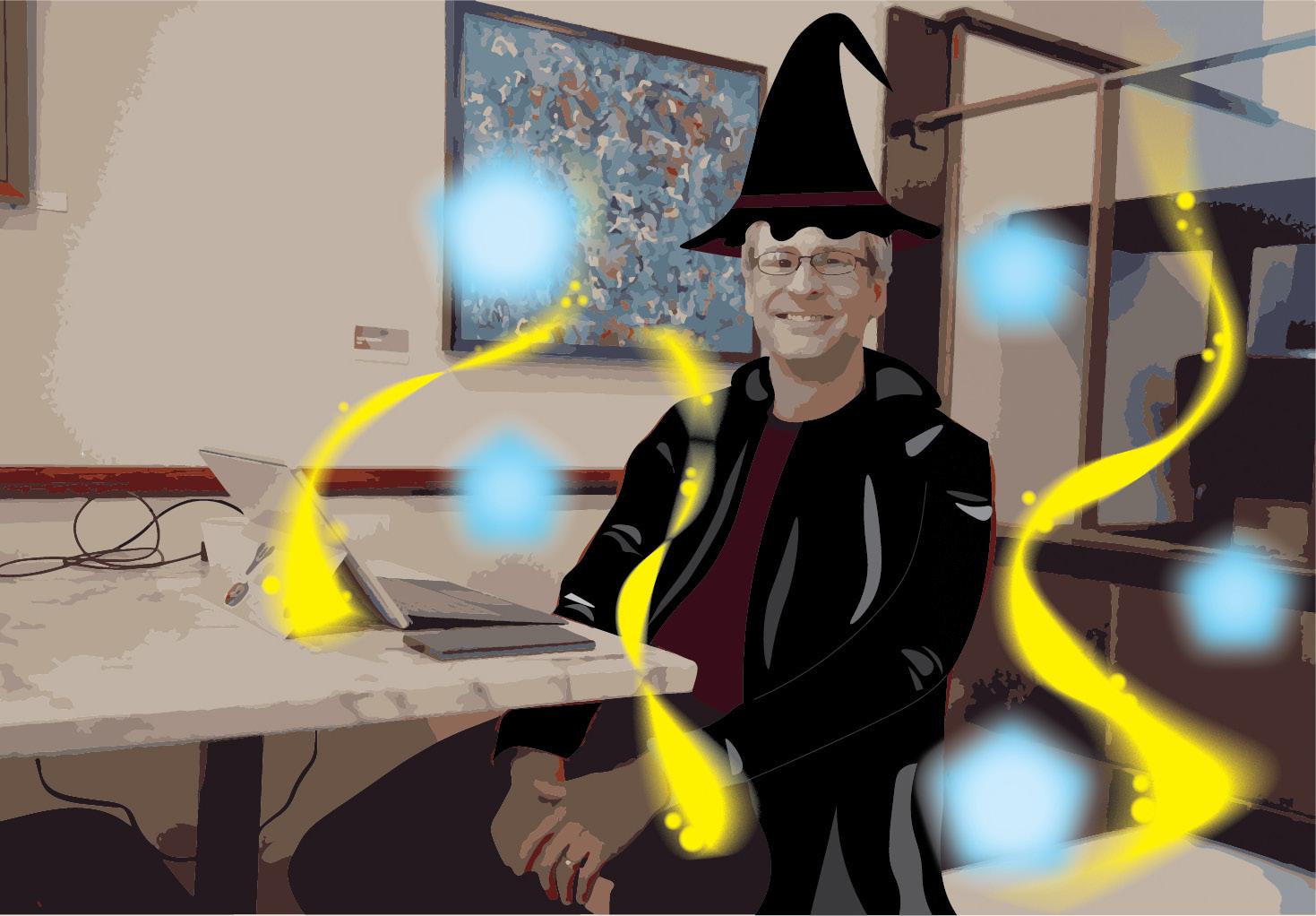
“My No. 1 enemy in school was daydreaming,” Frazier says. “I could not keep focused.”
Now, Frazier daydreams on weekend mornings at the East Broadway Starbucks, typing away. He goes there to get away from distractions — using daydreams as fodder for his fantasy novels.
A magical beginning
Frazier’s fascination with fantasy began with the cartoons of his childhood: Thundercat , He-Man and anime. He eventually started playing the tabletop roleplaying game Dungeons & Dragons Frazier says once he had a taste for fantasy, he couldn’t get it out of his head.
“There were a lot of fantastical elements,” Frazier says. “You know, there’s magic and there’s monsters and swords. And I just kind of took to that.”
Dungeons & Dragons influenced more than just the subject matter of Frazier’s books. He approaches writing fantasy the same way a player in the game might — maneuvering characters around an unusual world and seeing what happens.
Frazier says the writing community has names for the different writing approaches. Plotters plan all their work in advance. Pantsers –– as in “by the seat of your” –– plan little to no part of their
work ahead of time. Frazier falls into the latter category.
“It feels like a living world and living characters to me because I don’t have an outline,” he says.
Behind the novel Frazier is working with indie publisher Creative James Media to publish Mage Breaker. He says agents in the traditional publishing world often don’t know how to represent his book because he blends genres. Working with a non-traditional publisher, Frazier has settled on the genre of urban fantasy to describe his latest novel.
“I was terming it like a (sci-fi) fantasy, but that’s not really as well known as urban fantasy,” he says. “So my publisher was like, ‘Oh, push urban fantasy.’ So there is some sci-fi. It’s just that everything is powered by magic.”
Frazier is among about 75 local authors who sell paperbacks of their books at Skylark Bookshop. (His books are also available on Amazon and Audible.) Many of those authors either self-publish or publish through non-traditional means. Skylark’s manager, Carrie Koepke, says Frazier has a strong grasp on the self-publishing process.
“Sean is a very good example of doing his homework and doing that
Sean Frazier has been conjuring fantasy worlds for decades. He continues to write his magic-fueled stories that bend genres.
Frazier has two fantasy series full of swords and sorcery.
Mythical monsters roam the land and a reluctant group of heroes band together to stop them in Frazier’s debut series. The four books are: The Call of Chaos, The Coming Storm, Descent Into Madness and Ascent Into Light
Mage Breaker
Frazier’s upcoming book follows a distrustful gunslinger and outlaw mage.
Mage Breaker will be released November 2023.
work to make it quality, even as he did it himself,” she says.
Building his own world
Matt Cesca is a friend of Frazier’s and a fellow fantasy author. Although he hasn’t previewed Mage Breaker, he says he enjoyed all four books in Frazier’s The Forgotten Years series.
“They are well-written,” Cesca says. “They’ve got moments of humor. They’ve got great characters, which is the thing that matters most to me. And that’s some really good world-building as well.”
Mandy Lawson is another one of Frazier’s self-published author friends. She previewed Mage Breaker prior to its release but says she doesn’t want to give too much away. “It is such a fun adventure of a book,” Lawson says. “And it’s so inventive. It’s such a creative world. And the characters (Ellyne and Nicole) are just a fun duo.”
Frazier says world-building comes naturally to him while writing. He says he finds something very powerful in writing fantasy.
“I just love creating,” Frazier says. “I can make everything up. And if anyone wants to argue, I just go: ‘Dude, it’s a fantasy book,’ or ‘it’s magic. I don’t have to explain anything to you.’ ”
 PHOTOGRAPHY BY MORGAN WILLIAMS
PHOTOGRAPHY BY MORGAN WILLIAMS


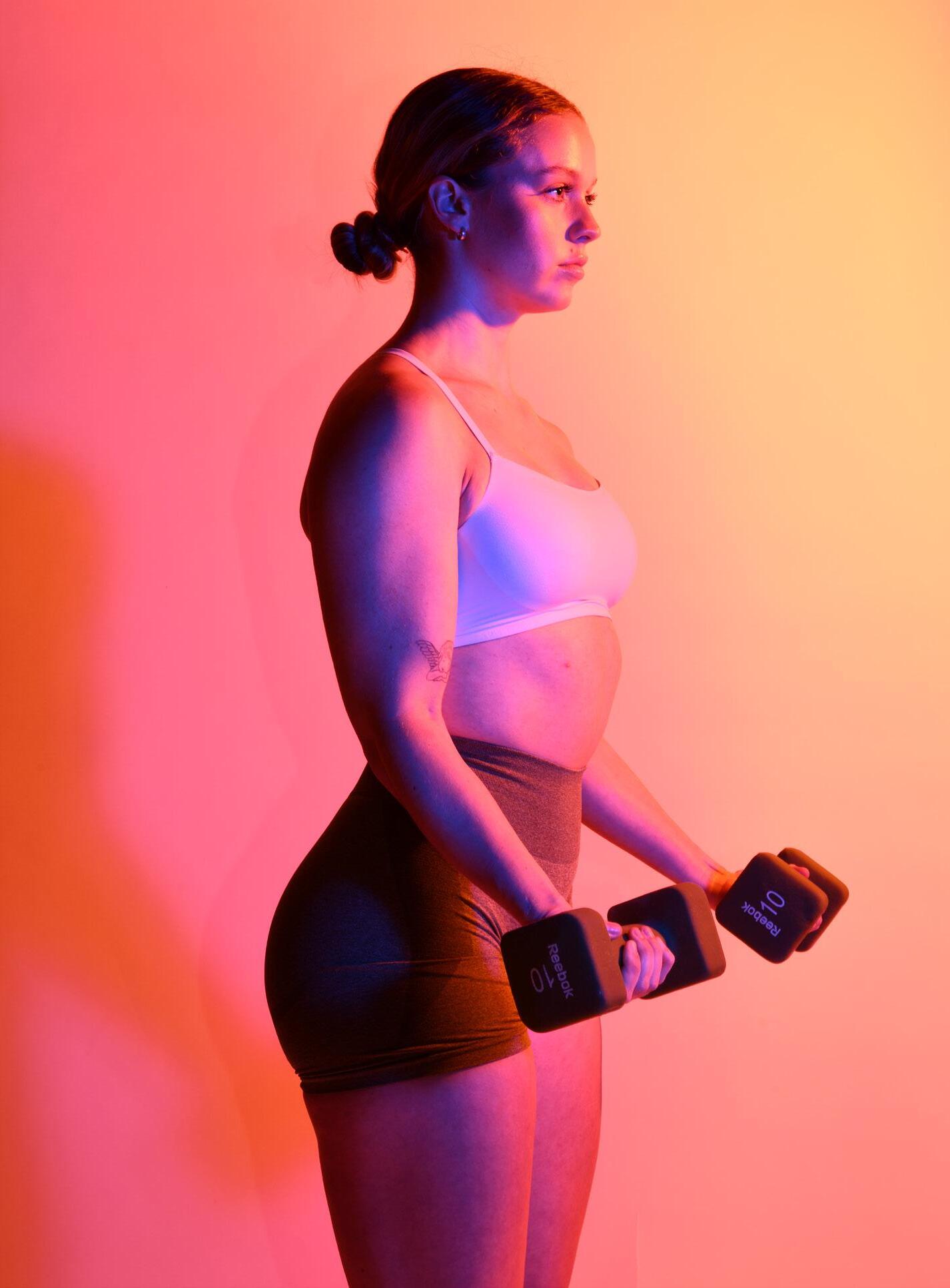 EDITING BY JESSE BERLIN
EDITING BY JESSE BERLIN




Kaitlyn
a variety of reasons, both mental and physical. In the process, they’re squashing societal expectations that police the strength of women’s bodies.
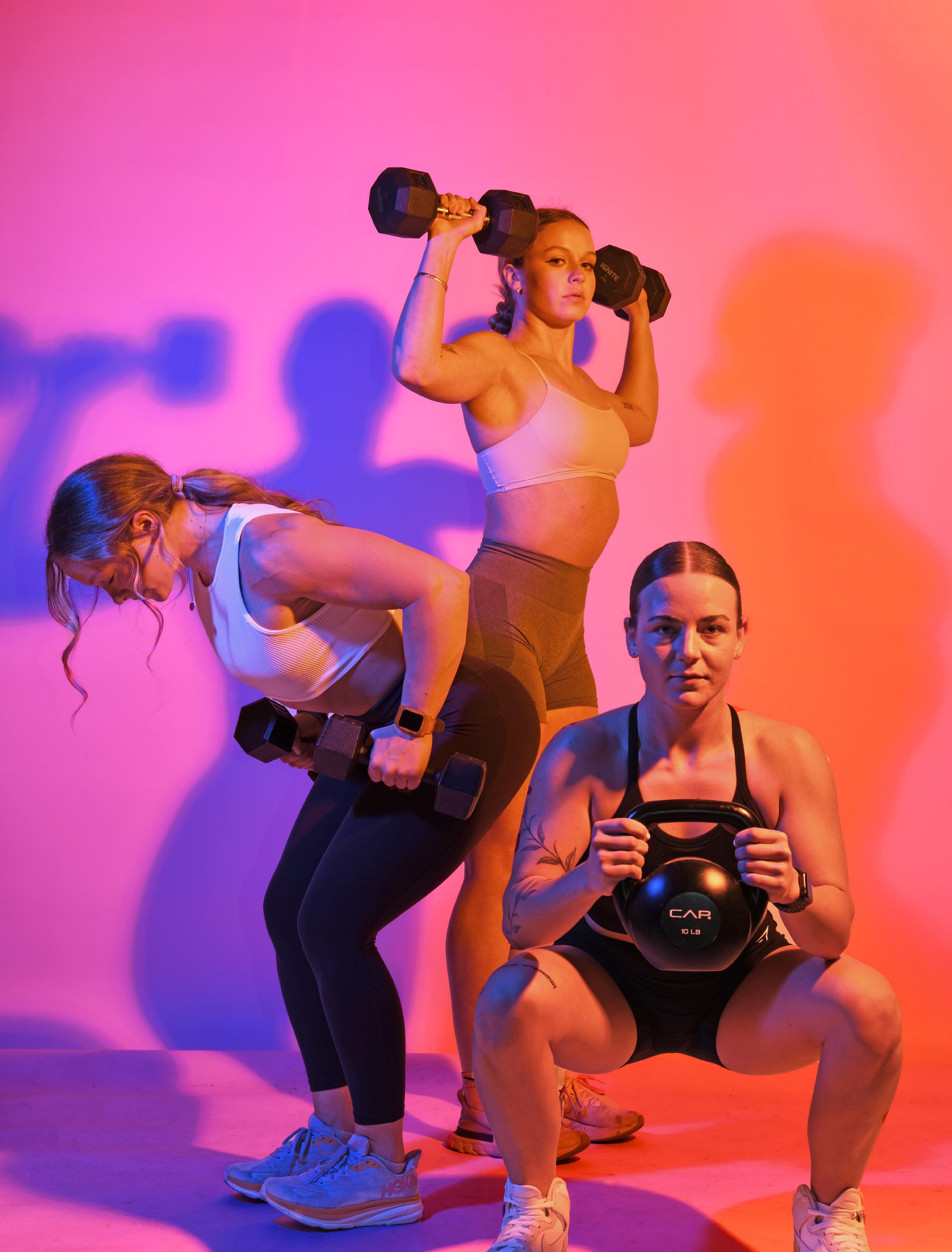
he day I saw Kaitlyn McConnell in the gym for the first time, I tried to make myself invisible. As smiley and bubbly as she seemed, McConnell looked as if she could split a rock in half. When I sat down to interview her two hours later, she was much less intimidating, and it felt like I was catching up with an old friend. She even let me try her matcha latte.
In the course of reporting for this story, I spoke to five women who, like me, are women who lift.
McConnell is an MU student and fitness instructor at the Athletes Performance Institute. Amy Frisella is an architect and interior designer who recently moved to Utah, and Natalie Burnam is an MU student who enjoys cooking. Emma Templin juggles three jobs while pursuing a master’s degree, and Britney Allan works as an assistant property manager in Columbia.
When they’re in the gym, they are not just lifting to get physically strong. They’re also lifting to get mentally strong. They have persisted past the obstacles that come with being a woman in the weightlifting community, whether it’s the stereotypes they’re subjected to or their own mental challenges.
Ask anybody in the gym why they’re there, and their answers will range from aspirations for their health to strength to general appearance. Over time, these goals can change just as people do.
At Pro Fitness gym, Emma Templin, who’s pursuing a master’s degree in fitness and nutrition, films a workout for her Instagram account. She also works at the front desk. Templin started lifting in high school to improve her performance in tennis and softball.
Templin realized she could change her physique by lifting weights. Without a coach, she trained herself — thanks to her knowledge of nutrition and exercise from her bachelor’s degree at MU.
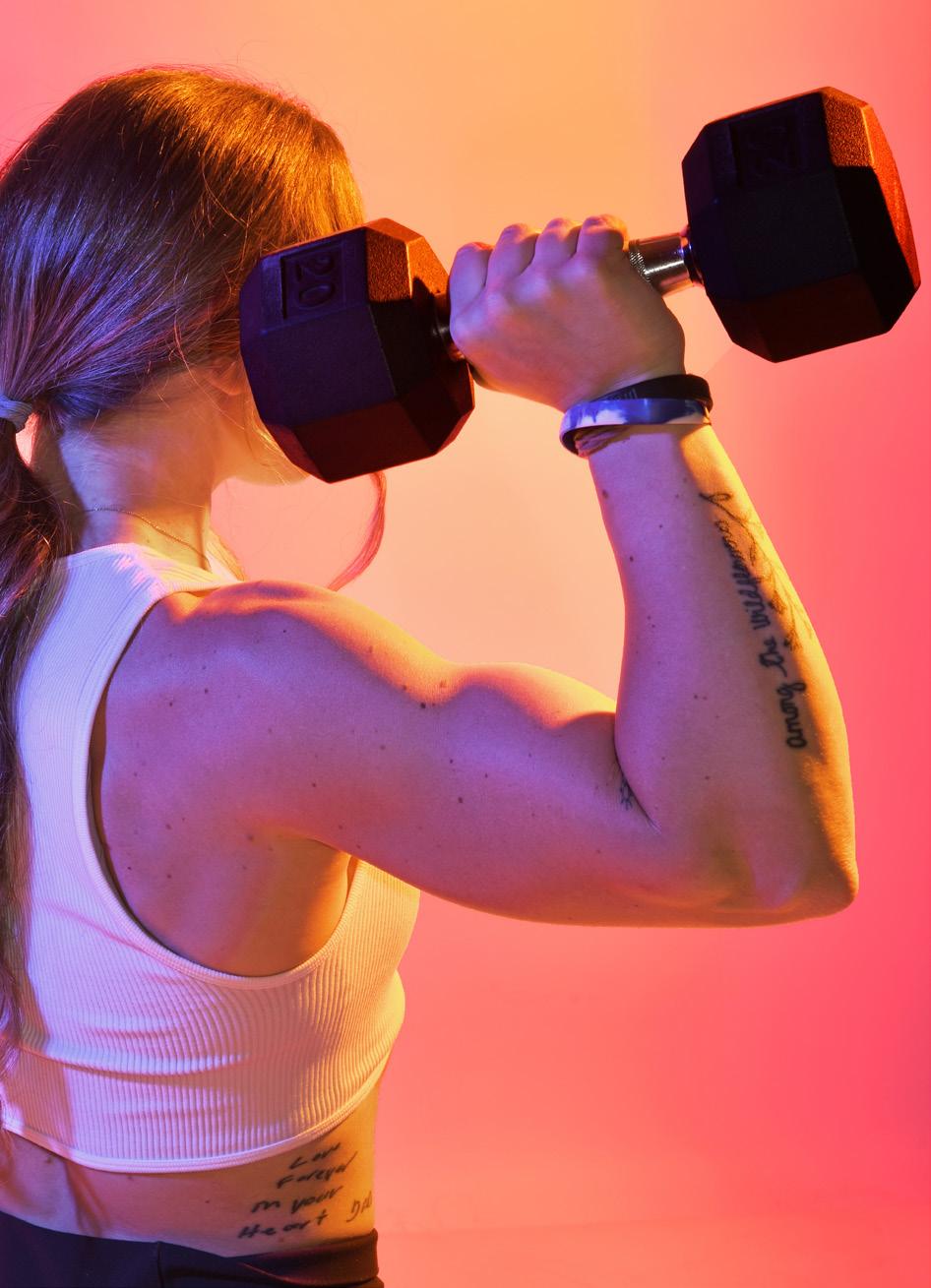
Last year, at Templin’s first-ever bodybuilding show, she placed first and earned a highly coveted pro card. This certifies a competitor as an elite bodybuilder, giving them the opportunity to make a professional career out of the sport.
Now, Templin lifts because it makes her feel good. “It’s kind of like my ‘me time,’ ” she says. “I can just go and have fun and not have anxiety about anything.”
At Body Refinery, Britney Allan, an assistant property manager at a Columbia apartment complex, records her progress in the mirror after pushing herself through an intense workout.
Like Templin, Allan started weightlifting for fun without prior experience. With a background in horseback riding, Allan decided to get to a gym right after high school to see where it took her.
Now, Allan goes to the gym because of how she feels about herself. “It obviously makes me feel really good, and I still want to be in the best shape that I can be,” Allan says.
At Crunch Fitness, Amy Frisella saunters across the gym floor zoned in and ready to work. When she started
says the increasing number of women who weightlift on TikTok is shifting the narrative in a positive way.
I CAN JUST GO AND HAVE FUN AND NOT HAVE ANXIETY ABOUT ANYTHING.
— EMMA TEMPLIN
“ “
out at 15 years old, Frisella walked into her hometown gym with feelings of dread. She felt entirely out of place.
“The beginning was terrible,” Frisella says. She remembered some days at Competitive Edge — where she worked out in high school — and would refuse to go inside. “Especially for girls, starting is terrifying.”
In the beginning, health was more of a suggestion, not a goal. “When I first started, that was it,” she says. “Aesthetics only.”
Now, Frisella finds herself in a more nuanced mindset. “It’s rewarding physically and mentally,” she says. “I also like the confidence I have.”
Looking back at the 15-year-old girl she once was — afraid of the gym and the people inside it — Frisella felt she didn’t belong. “Now I’m not afraid to take up space,” Frisella says. “The way that I would walk into a room before lifting and now that I lift, it’s completely different.”
The anxiety that comes with being a woman who lifts is not always escapable. Society too often creates stereotypes rooted in policing women’s bodies and valuing women being physically weaker. Women are more likely than men to face harassment about weight, their looks or their physiques.
Research from a 2020 Penn State University study found women are discouraged from working out in the weight room more because of “fear and discomfort” rather than disinterest. For instance, some women have felt uncomfortable by men’s behavior when they’re in the weight room, such as “unsolicited advice from male peers.”
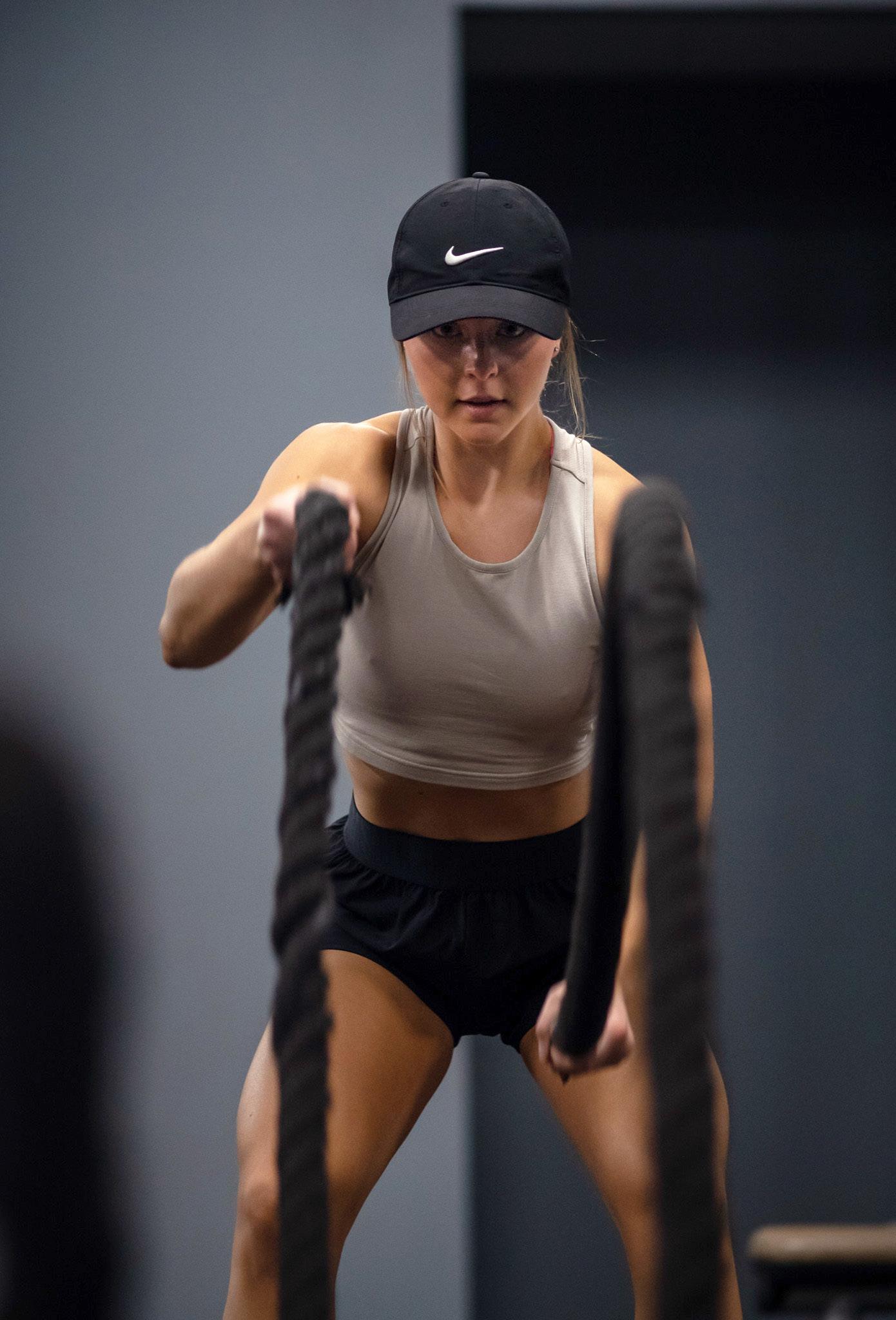
At Crunch Fitness, Kaitlyn McConnell quickly switches places on a machine with her boyfriend, Ian Flickinger, and begins a heavy set. In her time at the gym, she has received a lot of stereotypical comments.

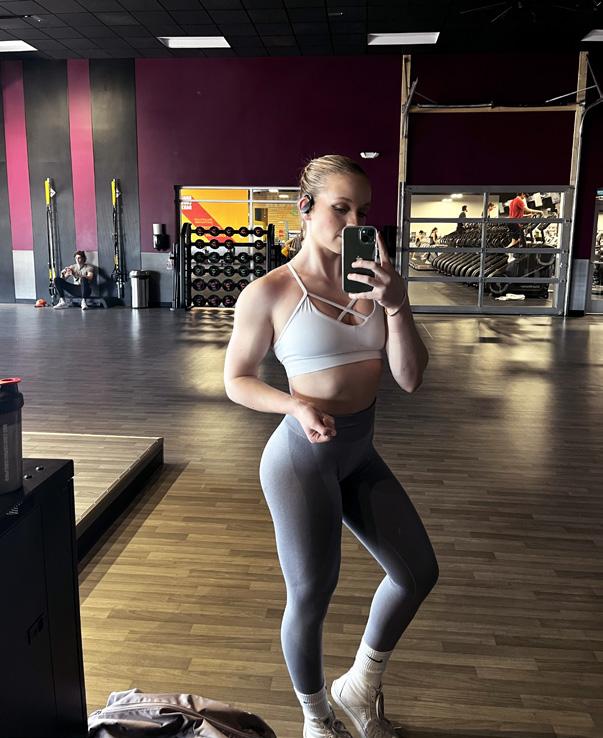
“Definitely the usual ones like ‘lifting makes you big, lifting makes you bulky,’ ” McConnell says. “Usually my reply to that is you have to try to get bulky.”
Templin also attests to the misconception of women becoming bulky when they lift heavy weights. “(It) is blatantly not true,” Templin says. “You have to lift for hours upon hours every single day at the gym to even get nearly as bulky as you would picture.”
Allan knows the assumptions about looking “manly” all too well. She says it’s undeserved and cruel.
When Frisella started posting her workout progress online in 2018, people weren’t always supportive. “There’s people who have been like, ‘Oh you’re one of those?’ and hearing that sucks,”
Emma Templin (clockwise from left), Sydney Scalia and Kaitlyn McConnell have had to overcome stereotypes about women weightlifters. According to a 2018 study in International Journal of Exercise Science, researchers discovered that only 20% of women in the U.S. weightlifted “two or more times per week.”
Frisella says. “There’s times where I just want to delete my whole page.”
In vulnerable moments, Frisella says all it takes is one person in the comments of her posts to invalidate everything she has worked for. And as McConnell adds, sometimes the comments hit close to home when family members ask if she’s getting “too big.”
However, McConnell says she believes there has been a shift of more women picking up weights, resulting in more people celebrating the idea.
“I think, especially (on) TikTok, I’ve seen a lot of girls lifting and lifting heavy, and it’s definitely good to see,” McConnell says. “I feel like for the most part people are proud of you.”
For McConnell, there are times where the battle in the gym is more mental. This arises when she starts comparing herself to other bodybuilders who are at different stages in their lifting programs.
“With bodybuilding culture on so-
For women who want to find a welcoming place to weight train, here are recommendations from our seasoned lifters.
cial media, there’s a lot of people that are about to compete,” McConnell says. “You might see someone who’s about to do a show, and they look ripped and shredded as hell and you think, ‘I want to look like that.’ ”
The comparisons on social media, Allan says, almost never go away. “It gets really tough sometimes to look in the mirror,” she says. “You just constantly want to be better, and it just doesn’t ever feel like it’s enough.”
However, over time, Allan has felt that the comparisons, at least on social media, have stopped. “In reality, the people I know in person, I compare (myself) to those people and the person that I was yesterday, not the people I see on Instagram anymore,” Allan says.
Although weightlifting is most often associated with physical challenges, women in the gym are not newcomers to the mental work lifting can create.

Inside Wilson’s Fitness, MU junior Natalie Burnam puts herself through a grueling leg day before capturing the aftermath on her Instagram. The gym changed her life, and in some ways, it saved her from bad habits and a lifestyle she no longer wanted for herself.
“When I started in the gym, I had to wean myself of these habits because you can’t push your body to that extent if you’re going to be mistreating it like how I was,” Burnam says.
After emotional ups and downs during her freshman year of college, Burnam prioritized overcoming an eating disorder and staying away from toxic habits by going to the gym.
“It helped me mentally, but it was never out of anger,” Burnam says. “It was more out of ‘quit making yourself suffer.’ ”
For Allan, the gym also provided an escape for her mental health and from her deepest insecurities. “It’s kept me away from sitting and dwelling on my thoughts or what somebody said earlier in the day,” Allan says. “It’s an outlet for me to just channel all of my energy into weightlifting and just literally fighting gravity with everything I have.”
McConnell reminds herself that the goals have to be intrinsic rather than extrinsic and that the gym is there to make her mind and body feel good. “With working out, you can also use it to train your mind, too,” McConnell says. “Being able to look back at a really hard workout that you didn’t think you could do and be like, ‘I killed that.’ It’s cliche sounding, but I can do hard things.”
Natalie Burnam, like other weightlifters, likes to document her progress on social media. She posts some of her workout routines on her Instagram. Outside of the gym, Burnam is a nutrition and exercise physiology major at MU.
Body Refinery attracts a mix of lifters, Sydney Scalia says. Its Hybrid Team personal training classes provide a variety of HIIT workouts. 120 E. Nifong Blvd., bodyrefinerygym.com.
This gym is a popular place with college students, Scalia says. It offers individual training and group fitness classes. 101 S. Providence Road, crunch. com/locations/columbia-mo
This family-owned gym attracts serious weightlifters, Scalia says, and also provides bodybuilding specialists. Kaitlyn McConnell says she likes its garage doors that are opened for outdoor workouts. 5505 Bull Run Drive, ironhousecolumbia.com
PRO Fitness tends to draw an older, more laidback crowd, Scalia says. She says they have a variety of machines and equipment you “might not be able to find at commercial gyms.” 3210 Vandiver Drive, profitnesscolumbia.com
Natalie Burnam says she likes the welcoming staff at this gym and its plentiful equipment that allows for workouts without feeling rushed. 2902 Forum Blvd. and 2601 Rangeline St., wilsonsfitness.com



reserve


and movies B O O K N S A
a meeting room
Story......................................MaraDumitru Design.....................................HeeralPatel Editing....................................AbbyStetina

Libraries are a portal into a different world, one filled with dragons and treasure chests, aliens and talking animals. The Columbia Public Library, the local branch of the Daniel Boone Regional Library, is no different. More than just a place to check out books, it’s also a de facto living room of the town.
The three-story building, perched on Garth Avenue and Broadway, houses much more than books. It’s a place where the community comes together for everything — from clothing swaps to culinary classes — offering a warm spot on a rainy day or a space for curious individuals to gather and talk.
The library’s current location opened in 1971. In 2002, the library underwent massive renovations to transform the building to what we know today. During this time, the library introduced a number of sculptures on the exterior of the building that are instantly recognizable to anyone passing by. Albert Paley’s radiant sculpture Cypher is a beacon for Columbians. La Colomba by Peter Chinni, which stands across the street from the library, depicts the motions of a bird in flight.
The Columbia Public Library is a third place — a social gathering spot separate from the home or workplace. It is a neutral public ground where all types of people can meet. Other third places can be coffee shops, pubs, post offices or playgrounds. These settings provide a sense of belonging, a space for people to connect with others in their community and engage in conversation. Third places are often considered crucial to fostering social connections and combating social isolation.
“As community centers have kind of gone away and other sorts of public resources have vanished, libraries have grown to fill some of those holes,” says Stellan Harris, an adult services librarian.

“We can’t do all the things those resources did, but we can get folks pointed in the right direction and cover for some of those areas that might not be there for folks anymore.”
According to the American Library Association, 95% of library users and 83% of non-users agree that having a library in each community is important. Libraries have also become a center for civic events, community classes and kids activities.


Charlie Starbuck and his grandfather Chris Starbuck play games on a computer. “I’ve come to the library forever,” says Mary Starbuck, Charlie’s grandmother.
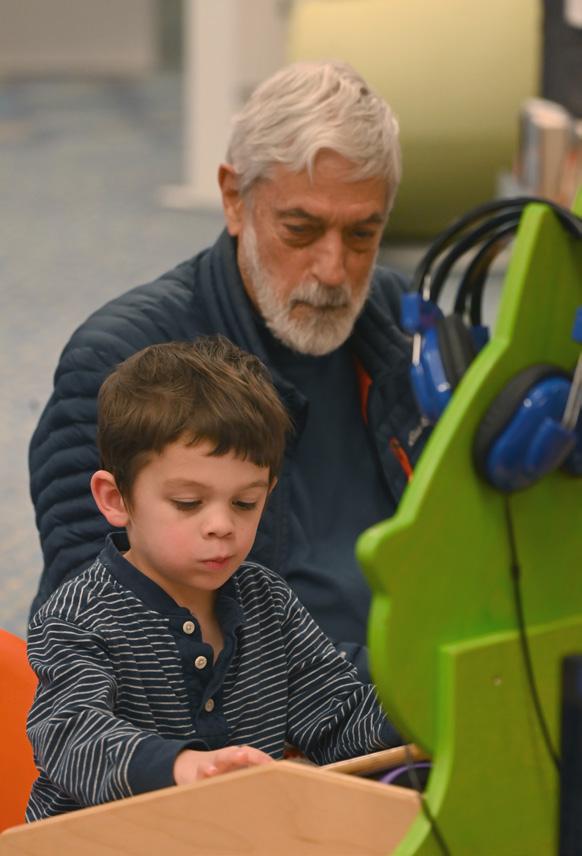
“A good problem about Columbia is that you can be 100 on a waiting list — people in Columbia read.”
Here are 10 things you can do at the library besides checking out a book.
2
Apply for a U.S. passport Process your passport application and get photos taken for an additional fee. By appointment only.
6
Access TV and movies Just like checking out a book, you can also check out a wide range of shows and movies in-person or online.
Meet authors
The library hosts online and in-person events with authors of varying genres.
7
3
Get technology help Library trainers help teach basic functions of Windows, Apple or Android devices. You can schedule a private session or drop in on Tuesdays and Fridays.
8
ACT prep You can sign up for a four-session program during the spring covering each subject of the exam. The program is free of charge with a library card.
Join a club The library is a meeting point for the Silent Book Club, which offers a casual setting for book discussions and its youth version, The Page-Turners Book Club.
4
Vote The library is a polling station and also hosts civic events leading up to local elections.
9




5
Learn website design The library hosts various workshops to design websites or enhance existing ones.
Job search The library hosts various hiring events, resume workshops and has job-search resources on its website.
10 Reserve a meeting room Save a space for your group meeting.
Event organizer Chriss Jones (center) sets up coffee containers and stuffed pigs during an Angry Birds program. The library fosters learning through play in various programs geared toward kids.
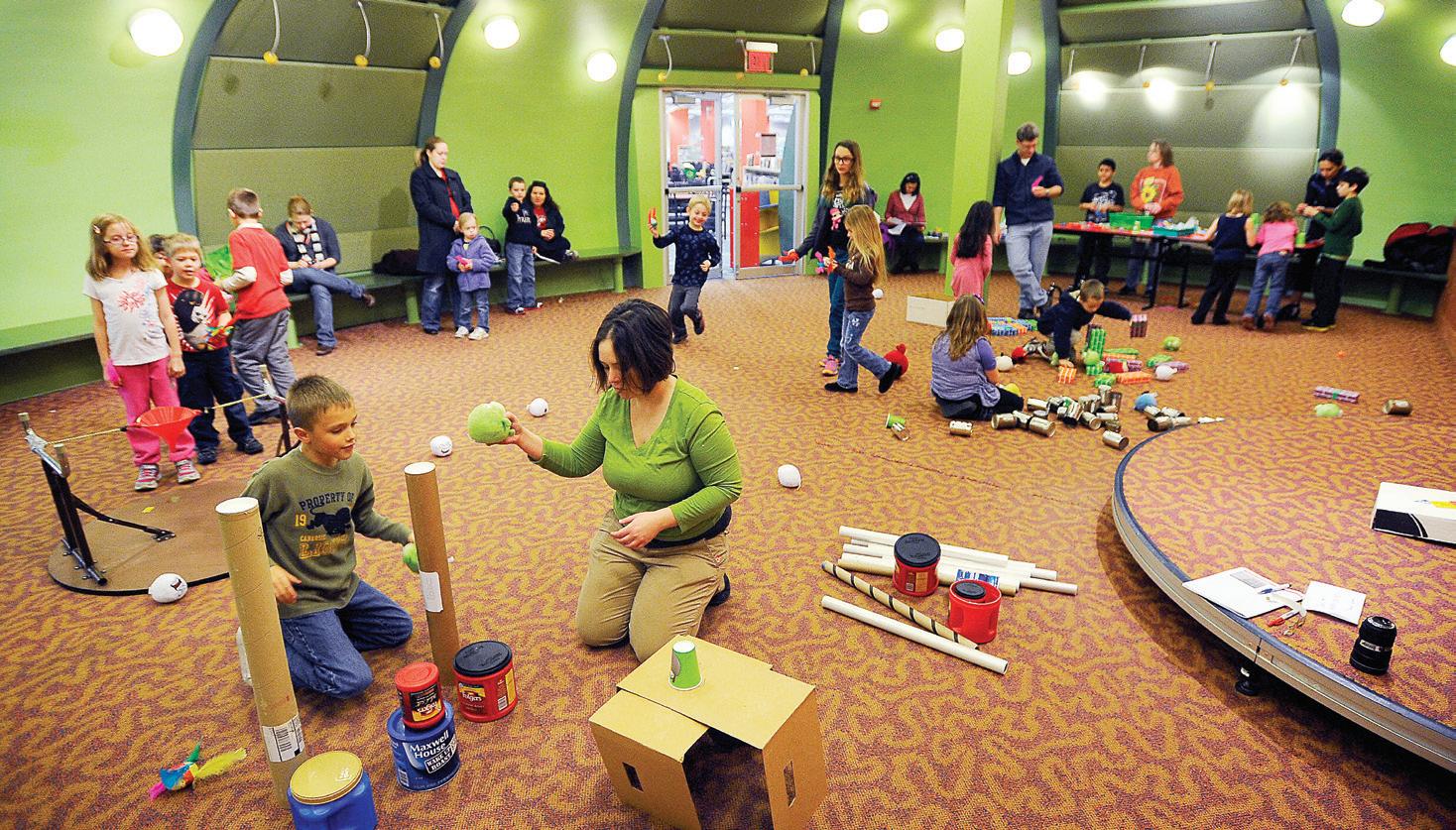
Instructor Katrina Everhart leads a group in seated warrior poses during a chair yoga class. The class included alumnae of Gamma Phi Beta as well as Alternative Community Training, which provides services to individuals with disabilities.

The Columbia Public Library bustles with voter activity during the 2018 primary election. As the morning progressed, more and more people passed through the doors to vote before heading into work.

Lucy Perkins hugs her mother, Madison Perkins, at the Columbia Public Library.
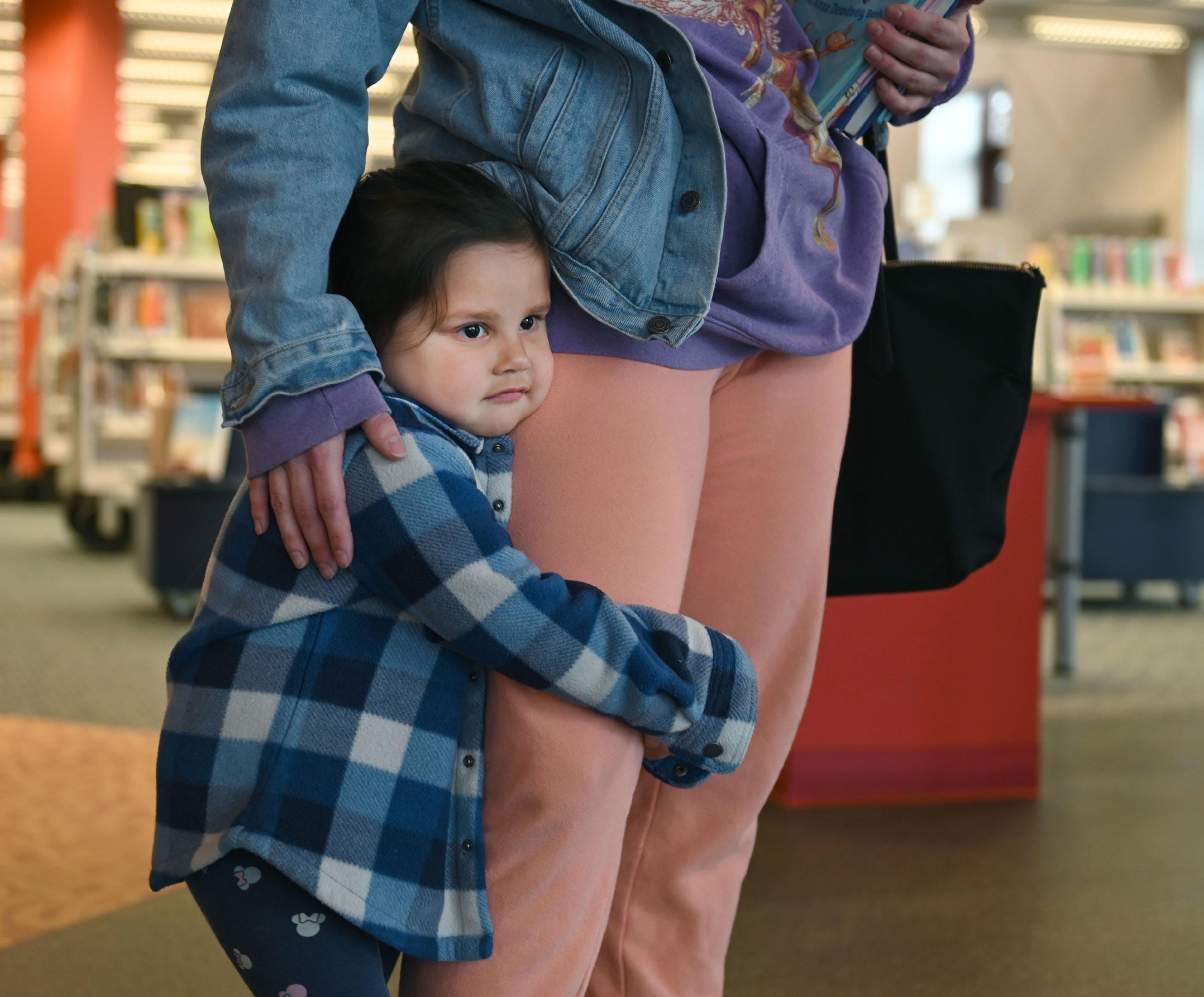
“There’s a lot of outreach into the community because of the library, so I think it keeps the community wholesome in a way,” Madison Perkins says.
It takes a village
Lauren Williams, one of the library’s adult and community service managers, explains that people come to the library for more than just their book needs.
“It’s a safe place to be in community with other people,” Williams says. The library welcomes everyone: regulars who come in for their morning papers, people experiencing homelessness who need a warm place for the day and the technology-challenged who need help figuring out their new phones.



Following a hard period during the COVID-19 pandemic, the Columbia Public Library is slowly returning to life again. More and more patrons are making their way back through the library’s doors, in numbers matching those pre-pandemic. The library saw about a 35% increase in visitors from January 2022 to January 2023.
“It’s a place that folks who maybe just want to get out of the house, but don’t wanna spend money — they can just exist,” Harris says. “And that’s pretty rare in this day and age.”
“Keeps me out of trouble,” says Robert, an unhoused person who spends most of his time at the library. “Keeps me off drugs, off street stuff.” According to The Guardian, there is a nationwide trend of libraries being a haven for people experiencing homelessness by providing an escape from harassment, inclement weather and even boredom. The library also provides computers with free Internet access.
But Robert isn’t the only one who uses the library’s welcoming environment; across the hall from him is a young college student on her way out after a study session and an elderly woman who’s getting help setting up her new e-reader.
Nestled in a cozy nook in the children’s area of the library is a father reading from a children’s book to his son. Having just moved to Columbia from Scotland, the Endress family finds themselves spending a lot of time at the library with their 3-year-old son.
The Child Mind Institute says reading to your kids at a very young age is important for neurological development. According to the institute, children who are read to daily have been exposed to 290,000 more words than their counterparts by the time they enter kindergarten.
“I feel like we should, as a community, always be willing to pay a little more and make sure that it’s always fun to have great libraries because they are literally magic,” Topher Endress says, while his son Wilson peeks from behind his back.
The Columbia Public Library, along with the other Daniel Boone Regional Library branches, are primarily funded by property taxes. Other funding comes from state aid, grants and donations. Over 160 library workers voted to unionize last year in May.
“I think it’s one of the only places where anybody can walk through the door, and they don’t have to buy anything, or there’s no criteria for them to use the space or to use the resources here in the building,” Williams says. “They can just come.”
“It’s a place that folks who maybe just want to get out of the house, but don’t want to spend money — they can just exist.”
— Stellan Harris, adult services librarianPhotography by Nick Sheaffer VOX MAGAZINE • JUNE 2023

Here’s the scoop on the origins of your favorite Columbia ice cream and custard spots.
 BY CAYLI YANAGIDA
BY CAYLI YANAGIDA
There’s nothing like ice cream on a hot summer day. For anyone looking for a frozen treat, we’re coming in cold with the most iconic spots in Columbia. From national sensation Andy’s Frozen Custard to local downtown favorite Sparky’s, no Columbian could ever get bored of the new flavors, seasonal desserts and cool combinations. While summer tends to be when most ice cream shops see a spike in sales, Sparky’s general manager Anthony Layson says the ones located in college towns usually remain steady year-round due to the loyalty of students and locals.
But where did these shops come from? What inspired their names? Here’s a roundup of the origins of Columbia’s ice cream and custard shops.
Andy’s Frozen Custard
2661 Trimble Road; 610 Cooper Drive; 15 N. Stadium Blvd.
Founded: 1986

Known for: Jackhammer custards, concretes and sundaes
There is no Midwest staple quite like frozen custard. This dessert is different than ice cream because of the addition of egg yolks to the traditional milk and cream ingredients. Andy’s is known for its seasonal jackhammer custards and its mixing and matching of various flavors. Although Andy’s is a chain that spans 15 states, it originated
here in Missouri. Founders John and Carol Kuntz opened the first location in Osage Beach, Missouri, naming the business after their son Andy. After moving the shop to Springfield, Andy and his wife, Dana, worked at the shop, eventually expanding to other parts of the state before going nationwide. Today, Andy’s can be found in states from Colorado to South Carolina. Columbians love Andy’s so much, there are three locations across town.
Buck’s Ice Cream
1400 Rollins St.
Founded: 1989
Known for: Tiger Stripe ice cream
Buck’s stands out from other Columbia ice cream parlors because it is made possible by the MU College of Agriculture, Food and Natural Resources. Located in Eckles Hall on the MU campus, Buck’s is a convenient location for students and serves the iconic Tiger Stripe ice cream, a vanilla-flavored, orange-and-black mixture that exudes Tiger pride. The shop is named after former graduate student Wendell Arbuckle, who became known as Mr. Ice
Cream. As part of his dissertation about ice cream texture, Arbuckle wrote scholarly articles about the ice cream research MU conducted from the 1920s to 1940. He went on to work for Baskin-Robbins as a consultant. After retiring, he wanted to give something back to MU, so he and his wife, Ruth, opened Buck’s in 1989.
Randy’s Frozen Custard
3304 Broadway Business Park Court
Founded: 2003
Known for: Flavors named for Columbia high schools
Randy’s Frozen Custard is known for its elaborate list of flavors and color-changing spoons. Like Andy’s, Randy’s started in Osage Beach and still has a location there. The Columbia location pays homage to the city by naming combos after every local high school in town, such as Grape and Butterfinger for Hickman, Gummy Bears and Mint for Rock Bridge and Blueberry and Butterscotch for Battle. Scott Byergo, owner of the Columbia location, says the name for the shop came from a relative of the late former owner of the Osage Beach location.
Ditch the basics with these out-ofthe-box options at Columbia’s ice cream spots.
Tiger Streak: Andy’s has a Columbia custom flavor with Oreo, creme caramel and hot fudge.
Colorful Kiddo: Randy’s has a concrete filled with vanilla custard, Nerds, gummy bears and rainbow sprinkles. It’s for anyone who is a kid at heart.
Oreo Speedwagon: This Sparky’s special isn’t your typical cookies and cream cone; it has coffee ice cream and cookie crumbles.
21 S. 9th St.
Founded: 2003
Known for: Funky interior, unexpected flavors
As a local favorite, Sparky’s is well-known to Columbians for its unique flavors, often switching up the options to keep customers coming back. Its interior is also well-loved, featuring eccentric paintings and irreverent touches. The shop is named after owner Scott Southwick’s white bulldog, who looked just like the statue that sits outside the shop. Manager Anthony Layson says that when Sparky was still alive, he would sit outside the store next to his likeness, and people would think there were two statues.
Sparky’s became an internet sensation in 2011, going viral that summer for creating a limited-edition ice cream flavor made from the legions of cicadas that hatched that year. Layson says this is what made the small ice cream shop a classic for locals and a pit stop for curious tourists. “After that, it’s just gotten busier and busier,” he says. “We don’t even flinch at these craziest days we have anymore.”
Small businesses fuel our local economy, create jobs, and keep Columbia the vibrant place we all love. discoverthedistrict.com
Ashley Nichols helps people of all ages fire up their kitchen skills at Back 2 Basics Cooking.
BY CAYLI YANAGIDAFun, confident, patient and accepting — these are the words used to describe Ashley Nichols, chef and teacher of Back 2 Basics Cooking classes in Columbia. Adored by parents, kids and folks looking for a unique activity or to learn the basics of cooking, Nichols provides something for everyone.
In 2014, Nichols eliminated dairy from her diet to improve her quality of life and manage migraines. This led to her cooking more often, something she enjoyed doing when she was a child. She soon realized how passionate she was about the relationship between food and our lives, so she created Back 2 Basics Cooking.
“I didn’t even know what I was doing when I first started,” Nichols says.
“I never said I was going to do cooking classes. It just evolved from one thing to another and that’s where we ended up.”
Back 2 Basics was on hiatus during the COVID-19 pandemic and returned last fall. Throughout the years, Nichols
has continued to connect with the Columbia community through something everyone needs: food.
Kelli Harmon, who started attending Nichols’ classes before the pandemic with her 9-year-old daughter, says the two love the class. Her daughter now uses the skills she learns to prepare meals at home.


“We always do food my daughter likes, like sushi and turkey roll-ups,” Harmon says. “(Nichols) is very accommodating to kids.”
Nichols emphasizes knife safety to kids, teaching them to be careful
Back 2 Basics offers classes on a variety of cooking topics. Some upcoming classes include Date Night on June 10 and Junior Chefs N’ Chaperones on July 23. For more information, visit back2basics cooking.net.
without being too fearful. She allows children to work with sharp knives because they are safer than dull knives and lets them know when they should or shouldn’t be using them.
Carli Hess, a mom who started taking her children to cooking classes in 2017, says Nichols’ emphasis on treating children with dignity plays a large role in their success.

“She’s a great teacher,” Hess says. “She’s really great at talking to the kids at a level where they can understand everything. She doesn’t talk down to them.”
Picky eaters can be a challenge for parents, and Nichols’ kids classes allow young children to learn about their food and how to prepare it in appetizing ways.
Outside of providing children and adults with basic cooking skills, Nichols’ classes encourage participants to deepen their relationships with each other. Harmon says she doesn’t cook often, so cooking with her daughter during class is a special experience. “We’ve come home and cooked the recipes,” Harmon says. “We love doing them on our own.”
During date night classes, couples can make a meal, a side and a dessert. “That was a great date,” Hess says. “I cook a lot, so I was more comfortable in the kitchen. He doesn’t do it as much, so he got really excited about it and really competitive.”
Nichols refers to her date night classes as a form of couple’s therapy due to the number of times she’s seen couples argue over what they want to eat or how to season it.
“Sometimes, they’ll try something new, and it’s interesting to see them try it and sometimes even like it,” she says. “Same thing with the kids. We always just encourage them.”

Through her cooking classes, Nichols has helped families with allergies, diet restrictions and parenting.
Hess says Nichols offered to cook food for her family during a time when she was struggling to afford the classes. Hess says she sees Nichols as more than just a teacher. “She’s someone you want to know,” Hess says. “She’s like a friend.”
Nichols says her classes are important to her too, because its her way of giving back to Columbia. “It’s something I would do even if I didn’t need money,” Nichols says. “I really just enjoy cooking. I enjoy sharing what I know about it with others.”
Three houseplant enthusiasts share their secrets to a flourishing, flowering home covered in green.
BY SOPHIA DONIS AND TATEN JANESWe’ve all been there. You receive a plant as a gift from a friend or family member and think to yourself, “How am I supposed to keep this alive?” Have no fear. These Columbia plant parents have established their roots and are ready to share their best plant care tips.
MU student Bella Oltremare received her first plants as housewarming gifts from her grandma and continued her collection of succulents. “After that, it was just kind of an obsession,” Oltremare says. “Every time I would walk into a store, I would be drawn to the plant section, and I would have to buy one.”
Oltremare discovered that succulents aren’t as indestructible as they’re cracked up to be. The plants kept dying. So, she decided to focus her green thumb on houseplants instead. For many people, this is the moment when they realize they need some guidance on how

to reliably grow their collection. Vox compiled a step-by-step guide to help you turn over a new leaf and bloom into a well-informed plant parent.
1 Consult plant experts Oltremare has about 20 plants and highly recommends joining plant parent Facebook groups to learn how to care for them. “It’s a genuine group of people commenting, and whenever someone comments and others are saying relatively the same thing and it’s all from their experience, I trust it a lot more than a random internet source,” Oltremare says.
Columbia resident Natalie Pepoon says local plant shops are also a wealth of knowledge. “They’ve helped me try and figure out where plants should be in the house,” Pepoon says. “I have a south-facing window, so most of my plants are in
Columbia has a handful of local plant shops that provide supplies plant parents might need.
CMSE Giving Gardens
4040 S. Bearfield Road, 442-6935
COMO Grow 20 Business Loop 70 East, 823-3937


Helmi’s Gardens
7201 South Nursery Road, 886-9419
Strawberry Hills Farms
3770 East Highway 163, 449-1631
that room, and I wouldn’t have known (to put them there) without them.”
Consulting local plant experts can be as easy as striking up a conversation with plant shop employees when you’re checking out. Ask questions such as “What kind of light does this plant need?” or “How often should I be watering this?” This is a good place to start.
2 To water or not to water?
One of the toughest lessons when becoming a plant parent is that watering schedules don’t always sync up. Although some plant parents have a specific day to water their plants, such as “Watering Wednesdays,” other plant parents meticulously monitor individual plants to check moisture levels.
Pepoon has about 40 houseplants and says she checks her plants once a week to see if they need water. “If they’re damp or
I can stick my finger in it and have dirt come up, I will skip watering that week and wait until the next week,” she says.
If picking a specific watering day or checking each plant individually isn’t for you, there are a handful of plant care apps that can eliminate part of the guessing game. Pepoon recommends the PlantIn app because it allows the user to take a picture of their plant to identify it. The app provides in-depth plant information, care instructions and will tell you if it’s safe for pets. This feature is key to helping you avoid having plants that are toxic for dogs or cats.
Propagating plants is a great way to expand your collection without over-spending. Using clippings from healthy plants with strong roots ensures the new sprouts grow strong.
3 Take a leaf of faith
Another tough road to navigate is saving a plant once you notice it’s taking a turn for the worse. With the right combination of research and tender love and care, healing your plants is possible.
Like the app PlantIn, Oltremare uses the PictureThis-Plant Identifier app to help diagnose her sick plants. Users can scan the leaves of the plant and get tips on how to adjust the watering schedule, position of the plant and fertilizer levels. Every plant is different.
“I think it’s so funny how the whole process of being a plant owner is literally just trial and error,” Oltremare says. “Sometimes all the plant needs is to just
5 Pot it like it’s hot
Just like water schedules that don’t sync up, different plants need to be repotted at various stages and times of growth. Although snake plants prefer crowded roots, pothos enjoy room to grow and struggle when the roots start clumping together.
A good way to tell whether a plant needs a new pot is checking to see if the roots are sticking out of the drainage holes. If you can’t see the bottom of the plant and are trying to figure out whether or not to give the pot an upgrade, find out how long the type of plant typically grows before needing to be repotted.
A fun way to grow your collection without breaking the bank is to propagate. This is typically done by cutting off part of an existing plant and placing it in water so roots can start to grow from the stem. It’s important to take clippings from a plant that is healthy and well established. Oltremare recommends propagating pothos plant clippings because they grow easily and can stay in water
Columbia resident Chloe Fischer recommends cutting the stems so there isn’t much excess. “Grow your propagations in water for much longer than you think,” Fischer says. She also recommends placing your propagations in a clear container, positioning it to receive an adequate amount of sunlight and replacing the water
If you want to move your propagation from water to a new pot, wait until there’s an abundance of root growth. If the roots aren’t developed enough and are too frail, the plant won’t grow in the soil.
If the plant does need to be repotted, Fischer recommends choosing a pot that is one size larger than the current pot and has drainage holes. If a pot doesn’t have drainage holes, the excess water will sit at the bottom of the pot and cause the roots to rot, which can kill the plant.
“Make sure the soil is completely dry before removing the plant from the pot and very gently squeeze your soil so that the dried soil breaks up and falls out of the roots,” Fischer says. “Then, you can place it into new nutritious soil and make sure you water it immediately after.”
With all the different phases of our lives, sometimes plant parents need to make the hard decision to reduce their collection. Fischer had a large plant collection but had to downsize when it became too hard to care for them.

Fischer urges fellow plant lovers to not let your plant collection become a jungle — aka too much to handle. As you decide which plants to give away, feel free to keep the ones that are best for your space and you feel confident taking care of. Because she doesn’t have an abundance of plants to give away anymore, Fischer propagates her existing plants and gifts them to friends and family.
“But that was one of the original reasons I became a plant owner — so that I could share with other people,” Fischer says. “I enjoy giving away plants to people.”
Whether you’re just starting out or are a seasoned plant veteran, the journey to becoming a plant parent is full of successes and failures, and these Columbia plant parents are rooting for you.
Accent coaches are key to helping actors flawlessly pull off different dialects. One of them lives right here in Columbia.
BY SAM WILLSPaula Vanlandingham found a way to profit from her talent for mimicry by working behind the scenes on Oscar-winning films and fan-favorite TV shows.
Around 2009, Vanlandingham became an accent coach who works with actors to perfect different dialects in auditions or during production of movies, television and video games. While other people with these qualifications might ply their trade in Hollywood or New York, Paula works with thousands of clients from her home in Columbia while simultaneously building up a noteworthy presence on social media platforms.
When actor Michael Wilson Morgan auditioned for a role as an 1850s Irish priest on the Spanish language Amazon show La Cabeza de Joaquin Murrieta, he approached Vanlandingham with the challenge of teaching him how to speak Spanish with an Irish accent. Morgan only had four years of high school Spanish in his back pocket.
“One of the downfalls with Irish is it’s very lyrical,” Morgan says. “Almost everything I said sounded like a question and in Spanish, that’s the total opposite.”
Morgan worked with Vanlandingham for 15 to 20 days in sessions lasting two to three hours, continuing to consult with her as the show went into production.
“I had flashcards for all of my lines,” Morgan says. “One side was the Spanish broken down into ways that I could speak it and say it and then on the other side was the English version.”
Vanlandingham works with actors in different types of media, each of which has its own needs. She’s had clients from well-known works including
shows like Star Wars: The Bad Batch and Succession, video games like Call of Duty and many more.
“Accents are muscle memory just like a golf swing, just like a dance routine,” Vanlandingham says. It helps that she speaks Spanish, French, German, Bosnian and more.
Some accents are still difficult for Vanlandingham to nail down. She says the South African and Boston accents are especially challenging because of their similarity to Australian and New York accents, respectively. To teach and get in her own practice, she has her own set of techniques that include using rhyming English words to get the correct sounding combinations of vowels and consonants.

“I use a lot of visuals,” Vanlandingham says. “I’ll say, ‘Let’s look at a group of things that sound like a bird,’ and I’ll show a picture of a bird, a purse, a turtle and a church. Once they get the idea of what’s rhyming, they can mimic without giving any care whatsoever about the spelling.”
Ahead of the digital curve
Vanlandingham began accent coaching full time in 2014 when video conferencing technology started taking off. The combination of technology with a demand for accessible, around-the-clock accent coaching allows her to connect with anyone around the world from her Columbia home, a middle point between the time zones to the east and west.
“I was in so much demand from all the actors that I decided to go ahead and launch a business for it,” Vanlandingham says.
In 2020, Vanlandingham set up her TikTok @fleur_de_linguist which now has almost 107,000 followers.
than 50 world accents and American regional dialects. She
“I would do a little, tiny 60-second explanation of why certain accents do what they do,” Vanlandingham says. “Every so often I’d hit some real curiosity like, ‘How come people say route (like “root”) versus route (like “out”)?’ and then it would get like half a million views.”
Although her TikTok is gaining traction, behind-the-scenes accent coaches like Vanlandingham are often overlooked in the entertainment industry.
Vanlandingham coached for a film that won an Oscar in 2015, but dialect coaching has yet to be recognized as a category in entertainment awards.
“I think the day will probably come where best achievement in dialect coaching will probably become a category if not in the Oscars, then maybe in the directors guild or the SAG-AFTRA (Screen Actors Guild-American Federation of Television and Radio Artists) awards,” she says. “I think they will realize that actors weren’t magically capable of doing (accents) on their own.”
ACCENTS ARE MUSCLE MEMORY JUST LIKE A GOLF SWING, JUST LIKE A DANCE ROUTINE.”
— PAULA VANLANDINGHAM

Take a trip down the rabbit hole, Columbia. As part of the University Concert Series, the Mareck Center for Dance will perform the ballet Alice’s Adventures in Wonderland with Karen Mareck Grundy’s original choreography and Tom Andes’ musical score. Student dancers and local musicians join the professional ensemble to bring the performance to life. 7 p.m. June 3; 3 p.m. June 4, Jesse Auditorium, $28-48, concertseries.missouri.edu
Rochara Knight directs this dramatic comedy
husbands. These strangers learn their husbands are the same man, and this realization fuels a journey of coming to terms with this reality. 7:30 p.m. June 9-10 and 15-16; 2:30 p.m. June 11 and 17, Talking Horse Productions, $18-20, 607-1740
Local and independent booksellers come together to bring the joy of a book fair to adults. The event includes a vintage market, adult Capri Suns, games and a book bag for early-entry shoppers. 12:30 p.m. June 17, Rose Park, $15 general, $25 early entry, rosemusichall.com

Compass Fest
The event showcases live music all day long in Rose Park with a diverse lineup of local performers including J.ARTiz, Violet & the Undercurrents, Ruby Lane, the Mid-Missouri High Steppers, Estrella and more. 1 p.m. June 3, Rose Park, $15, free for kids 12 and younger, compasscolumbia.org
Grab your fanny pack, neon clothing, hair scrunchies and Hammer pants — The Blue Note is hosting an 18+ dance party to celebrate the music of the 1980s and 1990s. DJ Requiem will spin tracks spanning the two decades, and it’s up to dancers to decide which era reigns supreme. 9 p.m. June 17, The Blue Note, $10-20, 874-1944
The District invites you to Restaurant Weekturned-Month to enjoy a variety of special menus and deals starting June 1. Pick up a passport from participating restaurants and retailers, receive three stamps from any participating business during the
Brock Seals paints a custom pair of Nikes at last year’s Art in the Park festival on June 4. Columbia Art League’s Art in the Park began in 1959, making it the oldest and largest art festival in midMissouri. It broke its two-year pandemic-induced hiatus last year and will again be in Stephens Lake Park this June 3–4. Seals is a St. Louis-based artist known for his dramatic use of color and shape. Some of his most well-known works include painting the word “reparations” in large yellow letters on Market Street in St. Louis, as well as a specialty baseball hat for the Cardinal’s African American Heritage night in 2021. Though Seals will not be returning to the 2023 festival, attendees can expect to see works from locals like illustrator Michelle Martin and ceramicist Eric Ordway. This year, 30 Columbia artists, 87 Missouri artists and 20 artists from around the U.S. will be featured at the event, according to the Columbia Art League’s website.

